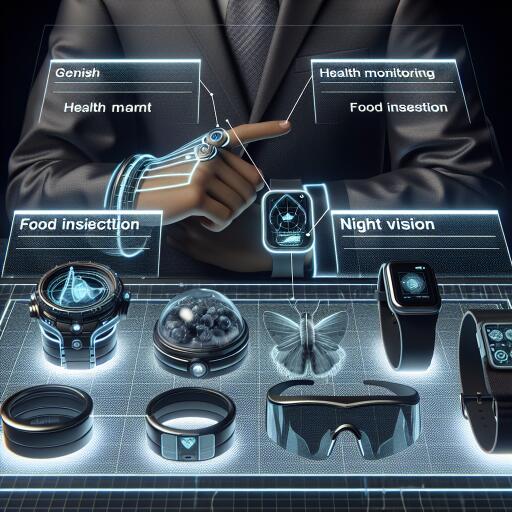Exploring Graphene’s Latest Advancements in Wearable Technologies
At the forefront of innovation, graphene continues to captivate the tech community with its remarkable properties and seemingly endless applications. This year’s Mobile World Congress (MWC) shined a spotlight on the next wave of graphene-inspired breakthroughs, particularly emphasizing how this material could revolutionize the wearable tech industry. Spearheaded by the Graphene Flagship in collaboration with the European Commission and GSMA, the MWC showcased over twenty graphene-based prototypes, highlighting the versatile capabilities of this material in health monitoring, food safety, and enhanced vision technologies.
Among the standouts, technologies developed by the Barcelona-based ICFO demonstrated graphene’s potential to transform mere gadgets into lifesaving apparatus. One intriguing prototype is a UV sensor designed as a lightweight, transparent patch. This patch seamlessly connects to a mobile device to track sun exposure, notifying the user when it’s time to seek shade, thereby aiming to reduce the risks of prolonged sun exposure.
Pushing the envelope further, ICFO introduced a fitness band leveraging the same graphene technology backbone. This isn’t just any fitness tracker; it boasts an array of sensors capable of monitoring heart rate, hydration levels, oxygen saturation, temperature, and even breathing rates. Imagine venturing into the Amazon jungle or scaling the heights of Mount Everest – this device could be a crucial companion, optimizing hydration and ensuring your body’s oxygen levels are safe, all from the convenience of your wrist.
The marvels of graphene extend beyond personal health monitoring. ICFO’s contributions include the world’s tiniest spectrometer and an ultra-sensitive, graphene-encompassed hyperspectral image sensor. These devices promise to bring the power of sophisticated lab analyses into the pockets of the average consumer. Imagine verifying the authenticity of medications or detecting harmful substances in your food with a device that fits into the smartphone in your hand.
“Integrating a graphene-based camera sensor into a smartphone could unlock the power to see beyond the visible spectrum,” according to researchers at ICFO. This suggests a future where consumers could use their phones to pick the freshest produce or navigate through thick fog with augmented reality vision, enhancing safety and decision-making in everyday tasks.
The applications of graphene in wearable technology and mobile devices mark only the beginning of this material’s potential impact. From health and fitness to safety and beyond, graphene’s contributions offer a glimpse into a future where technology and well-being are seamlessly intertwined, making the once-impossible within our grasp.
These advancements invite further exploration and anticipation for what’s next in the realm of wearables. As the technologies evolve, the fusion of graphene’s extraordinary properties with consumer devices promises to unlock new horizons in how we interact with the world around us, monitor our health, and make informed choices about our safety and well-being. The era of graphene-integrated wearables is just dawning, paving the way for innovations that could redefine the landscape of personal technology.










